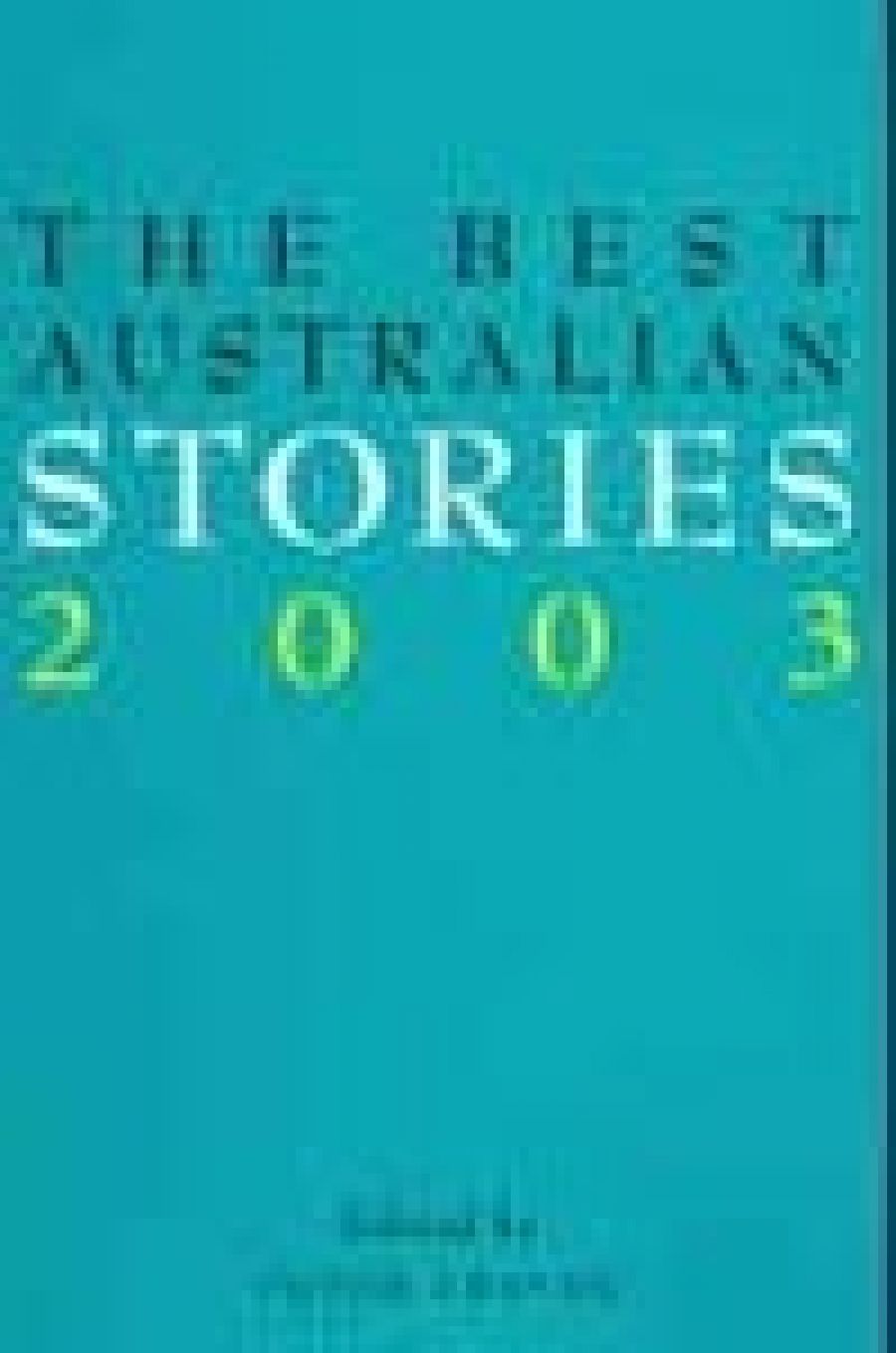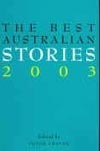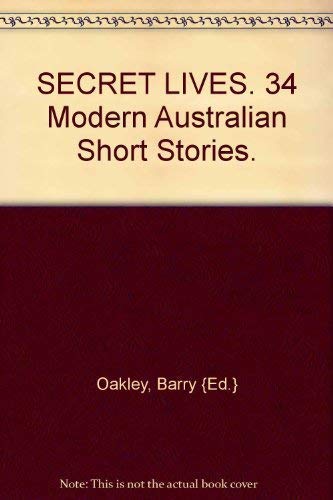
- Free Article: No
- Contents Category: Short Stories
- Custom Article Title: Secret Lives
- Review Article: Yes
- Article Title: Secret Lives
- Online Only: No
- Custom Highlight Text:
At Adelaide Writer’s Week in 2002, Drusilla Modjeska spoke about the prevalence in contemporary Australian fiction of historical subjects and distant eras; she exhorted Australian writers to consider instead the importance of addressing our own times. Much of this speech subsequently found its way into the essay ‘The Present in Fiction’, published in Modjeska’s Timepieces later the same year.
Then, last March, David Marr took up this baton and ran with it in his address to the Australian Society of Authors, ‘The Role of the Writer in John Howard’s Australia’. Contemporary Australian writers, he argued, are in the same predicament as Patrick White was in the 1950s,
As the old philistine culture of Australian politics reasserts itself. And the same way out is available to those of us who want to take it – to explore this new old Australia through writing [and] start focusing on what is happening in this country, looking Australia in the face, not flinching ... So few Australian novels – now I take my life in my hands – address in worldly, adult ways the country and the times in which we live.
- Book 1 Title: The Best Australian Stories 2003
- Book 1 Biblio: Black Inc., $24.95 pb, 460 pp
- Book 1 Cover Small (400 x 600):

- Book 1 Cover (800 x 1200):

- Book 2 Title: Secret Lives
- Book 2 Subtitle: 34 modern Australian short stories
- Book 2 Biblio: Five Mile Press, $24.9 5pb, 383 pp
- Book 2 Cover Small (400 x 600):

- Book 2 Cover (800 x 1200):

Barry Oakley has chosen not to provide the original publication dates of the stories in Secret Lives, which a large number of readers will find frustrating and annoying. On the other hand, chronology is Peter Craven’s chief organising principle: in his introduction to The Best Australian Stories 2003, the fourth in the series, Craven specifies its contents as ‘fiction that has been written (but not published in a book) over the last twelve months’. In the world of Australian fiction, then, this is the latest news; like any other news broadcast, it is defined as such by the beliefs and assumptions of whoever chased, chose, edited and ordered the stories that appear therein.
Both editors are aware of the power an anthologist wields in the processes of inclusion and omission, and Oakley describes and explains in some detail his various criteria for choice, beginning with a disclaimer:
I didn’t look for stories about identity, or about race, injustice or asylum-seekers. This is not an anthology with a political or social agenda, or a preoccupation with contemporary social reality ...
He was looking, he says, for ‘little revelations, not themes. Inwardness: secret lives’. So the theme of this anthology (for it certainly does have one) is interiority itself, something to which the short story form is for various reasons peculiarly suited. Oakley’s main criterion for choice, however, was what he calls ‘stories that worked’.
Within the chosen parameters of an anthology – chronology, nation or whatever – an editor can make nothing but subjective choices, based on his or her notions of literary value. So the only problem I have as a reader with someone else’s idea of ‘stories that work’ is that the stories that work for them don’t always work for me. A number of the stories in Secret Lives seem unconvincing: showing their machinery, hesitant about their direction, or stumbling in their narrative voices. Janine Burke’s and Sari Wawn’s stories about telling tales to the younger generations are based on a nice idea, but don’t seem to hold together structurally or to be imaginatively convincing to a reader. Terry Dowling’s ‘The Maze Man’ is one of those speculative fictions that asks ‘What if ... ?’ and builds up the suspense, only to dissipate it in an anticlimactic and disappointing ending.
Even the story by David Malouf (and Malouf has written some masterly short stories) is disconcerting. ‘Lone Pine’ is sufficiently similar to Flannery O’Connor’s classic ‘A Good Man Is Hard to Find’ to demand comparison with it, and the main difference – apart from O’Connor’s extra dimension of savage comedy – lies in the crazed logic of her plot; its ending seems inevitable, whereas the end of the Malouf story simply leaves you wondering whether you’ve missed something. Other choices that show good short story writers at less than their most convincing include Lily Brett’s ‘It Was After the War’, which is nowhere near as funny or as focused as her best fiction, and Elizabeth Jolley’s ‘A Hedge of Rosemary’, which is a nice little story in its way but has few of the qualities that usually lift Jolley’s work above the pack.
At the other end of the scale, there are some absolute crackers, such as ‘A Good Marriage’; this is vintage Olga Masters, and its final sentence is breathtaking. Helen Garner’s haunting ‘What We Say’ is a masterpiece of minimalism on an operatic theme, its symbolism likewise dramatic yet so delicately deployed you hardly notice it. Dorothy Hewett’s ‘The Darkling Sisters’ is a powerful, colourful tale of a real haunting, and Peter Carey’s ‘American Dreams’ carries not only the intellectual charge of the fabulist mode, but also the visceral clout that mode so often lacks.
Perhaps ironically, it’s Peter Craven’s The Best Australian Stories 2003 that, of the two books, seems to me the more convincing collection of ‘stories that work’. Without a single exception, they are full of power and conviction, and the few that don’t quite ‘work’ are those that have been extracted from longer works as yet unpublished, and so look structurally lopsided, unfinished or otherwise odd.
Craven is unapologetic about the soliciting and eliciting that constitute his methodology; he requests new work each year from the writers he regards as important, and doesn’t limit his choices to the formal category ‘short stories’, but also encourages writers to give him extracts from longer works. Like Hilary McPhee in her review of The Best Australian Stories 2001 (ABR, February 2002), I’m not at all sure that this is doing the writers a service, or that it’s wise of them to give him material that belongs in a wider narrative context.
I have grave doubts about this mode of anthologising, as I do about what seems to me an intellectually careless slide from ‘story’ to ‘writer’ – for, as the Oakley anthology demonstrates, the ‘best’ writers don’t always produce the ‘best’ writing. Perhaps a revised title for this series – ‘The Best Australian Writers’ – would be a more accurate reflection of Craven’s editorial practice, although it wouldn’t necessarily cover the field. One of the problems with a series like this is the way it accumulates authoritativeness, and anyone left out year after year is in serious danger of being undervalued or overlooked within the Australian literary scene by the many people who accept, without question, Craven’s critical authority. Perhaps it’s time to establish a new counter-series called Salon des Refusés.
None of which negates the fact that this book really is a terrific read from start to finish. Highlights include a superb story by Marion Halligan about a French marriage that takes an unexpected turn, and a heartbreaking, multi-layered story by Sonya Hartnett about memory, families and ageing. Marion Campbell’s story of sexual initiation and obsession evokes its era – much too clearly for the comfort of a reader who was there herself – through an accretion of material detail: transistor radios, Skyhooks records, well-thumbed copies of Women in Love. There are two short Frank Moorhouse stories about the passage of time, one funny in vintage Moorhouse deadpan fashion, and the other not funny at all. Two stories about suburban neighbours, Liam Davison’s ‘Sandtrap’ and Tom Gilling’s ‘Zeigler’, are reminiscent of John Morrison. The finale is a page-turner from Peter Corris in which the hard-boiled style of the Cliff Hardy books is employed to tell the technicolour tale of a gay wrestler called Pretty Phil.
But for me the gem of this collection is Carmel Bird’s ‘Dust’, which, although an extract from a longer work, and unlike most of the other such extracts, is perfectly carved out to form a stand-alone narrative. Her musing narrator Peter van Loon is a Tasmanian psychiatrist of Dutch ancestry who likes to contemplate the place of the Dutch in Australian history, the immigrant experiences of his own immediate forebears, and the seagoing history of their nation. And then, without warning, we realise what Bird – the writer in John Howard’s Australia – has been stealthily leading us towards:
On October 19 last year more than 350 refugee parents and children, wanting shelter, wanting asylum in Australia, drowned when their boat, which came to be known as the SIEV-X, sank in international waters, north of Christmas Island. ‘If I die in the sea,’ said one little girl to her father, ‘don’t leave me here alone.’ ... Am I writing against that loneliness? The child in the sea off Christmas Island had only her little human voice, and for the world at large, those words of hers are all that remain, but they are words never to be forgotten. When she spoke them she threw out a line to me ... I see that in quite visual terms, the little child in the water crying out to her father, the words becoming a line of eerie vermilion type.


Comments powered by CComment